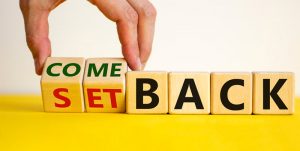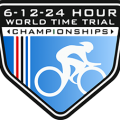 You were doing so well. Training was on track, you were feeling stronger and fitter, and things were looking up.
You were doing so well. Training was on track, you were feeling stronger and fitter, and things were looking up.
Until they weren’t. You caught COVID or a cold. Massive demands from work and life got in the way. An injury came out of nowhere. And now you have a setback.
How do you address the setback and get on the comeback trail?
In Jim Collins’ book, BE 2.0, he talks about the Stockdale Paradox, named after Admiral Jim Stockdale, who survived as a prisoner of war in Vietnam. The Stockdale Paradox holds two seemingly contradictory thoughts at once: Confront the brutal facts of your situation and hold reasonable hope that things will get better.
The Brutal Facts
You have had a setback. You have a bunch of fractured ribs from a bike crash. You got COVID four days before your A-race. You contracted a case of Achilles tendinopathy and your run schedule is bust. That happened and cannot be taken back. Brutal.
Another fact that you must confront: You are no longer where you once were in your fitness and training plan. Also brutal, and one fact that almost no athlete wants to accept. You want to jump right back into your training plan right where you left off just before you got hit by lightning.
No can do.
To ignore the brutal fact that you are not as fit and ready as you were before the setback is to invite disaster: another round of illness, risk of overtraining, invitation to overuse injury.
Things Will Get Better
The other facet of the Stockdale Paradox: reasonable hope that things will get better. If you give up to your injury, well, you just gave up. You won’t do what you can and must to get back on track. The physical therapy, stretching, strength training and all those things that will help you get going—you have to do those things, and you won’t do them without hope that they will help you improve and regain your trajectory.
Hope in the Stockdale Paradox is reasonable hope. When you go back to the track on the first day of running after two months of inactivity, you cannot reasonably hope to hit your 800-meter intervals at the same time you did two months ago.
But athletes will try to resume as though nothing happened. And get re-injured. And sick. And become setback even further.
Confront the brutal facts: You aren’t as fast or fit as you were.
And…
Have reasonable hope: Start where you are, at your current level of fitness and function, and begin from there. Have hope that with an intelligent training plan you can steadily and reasonably regain your trajectory and get back on the road.
References
Collins, J. and Bill Lazier. 2020. BE 2.0: Turning Your Business into an Enduring Great Company. New York: Penguin.





